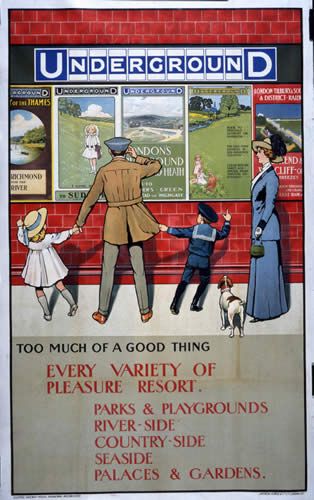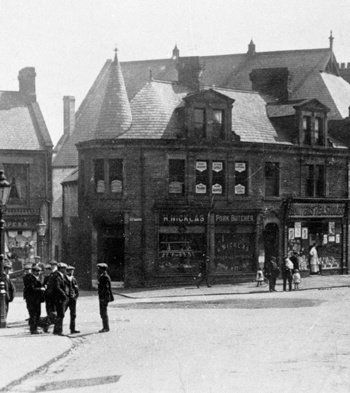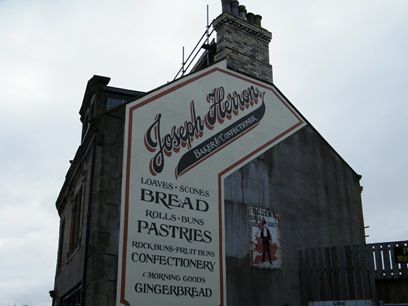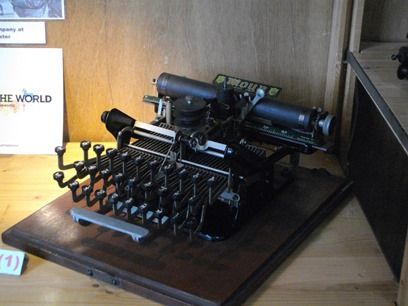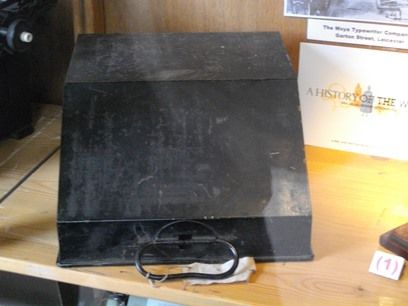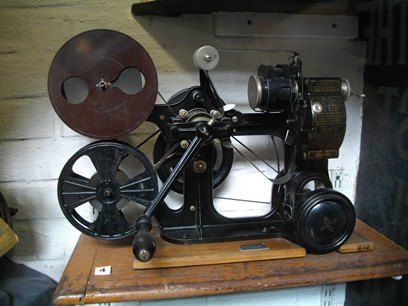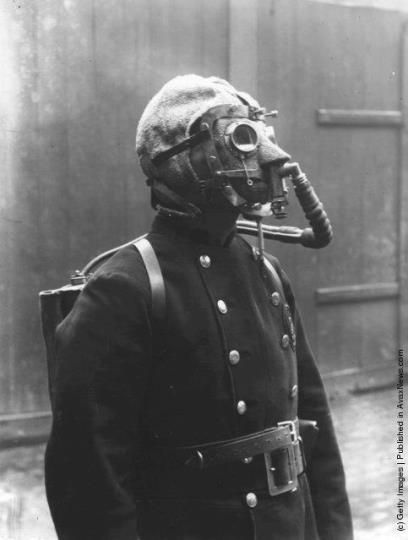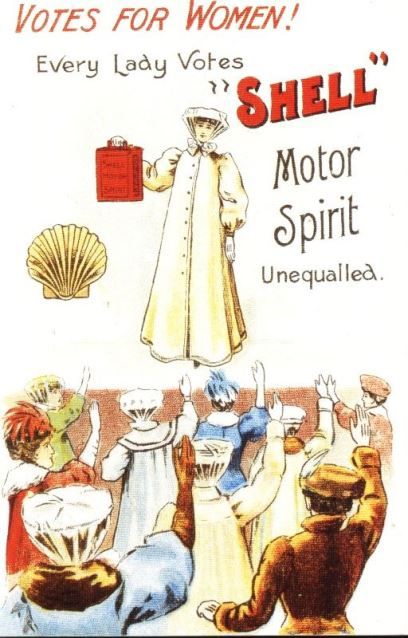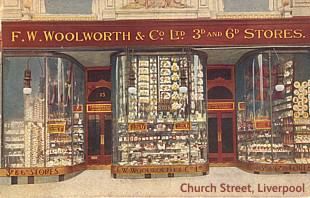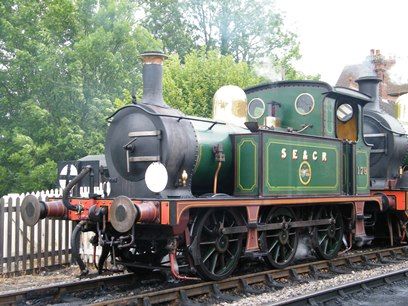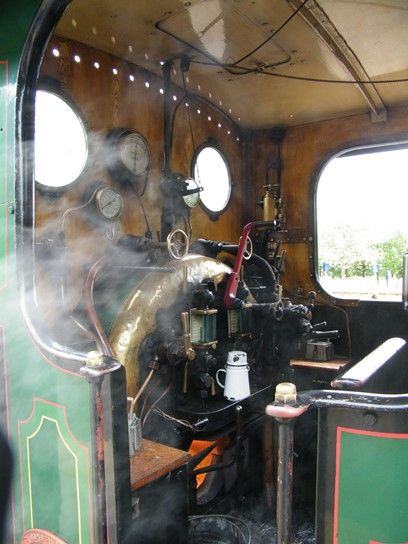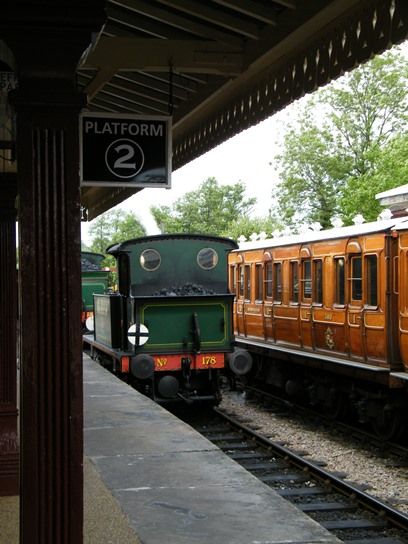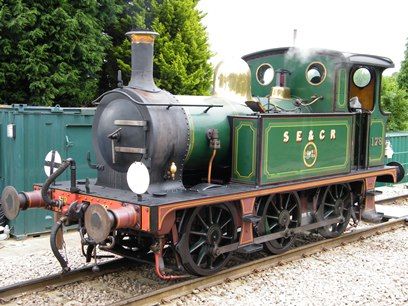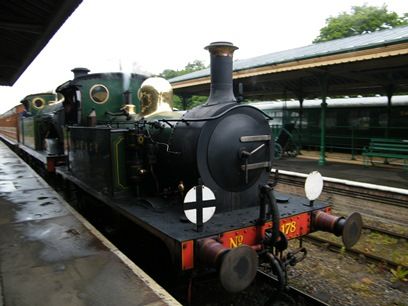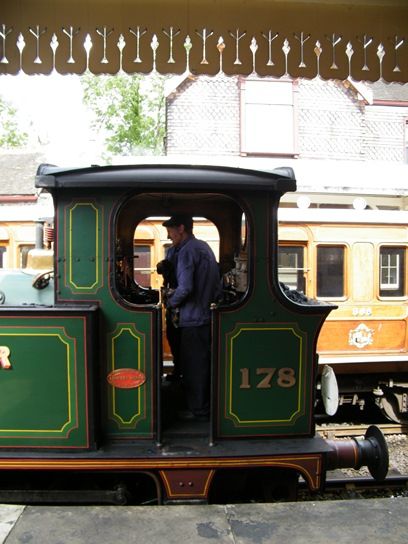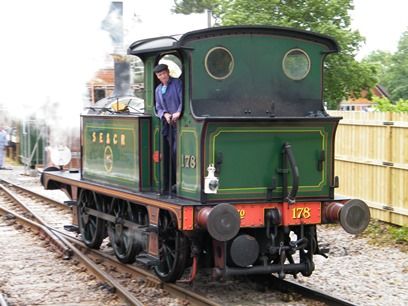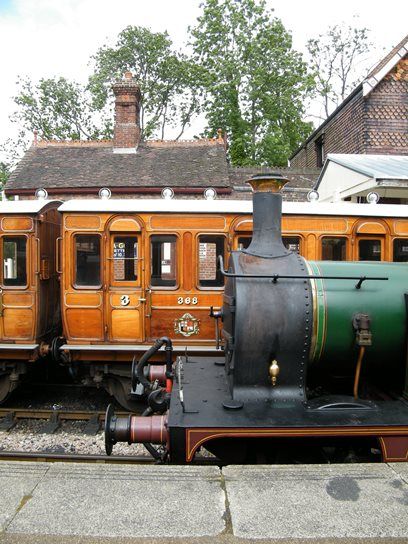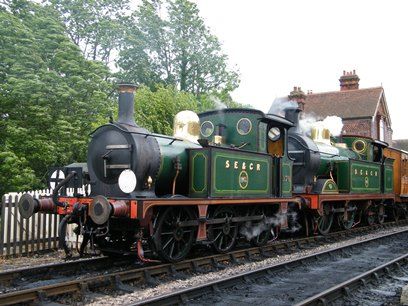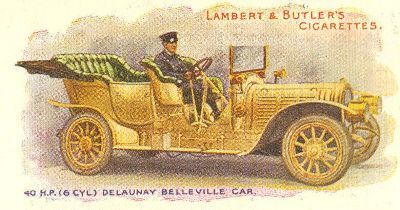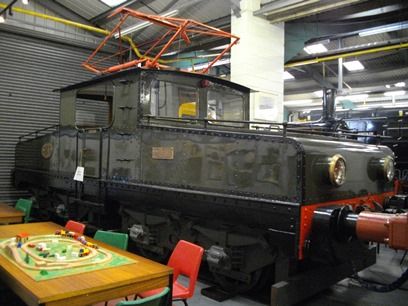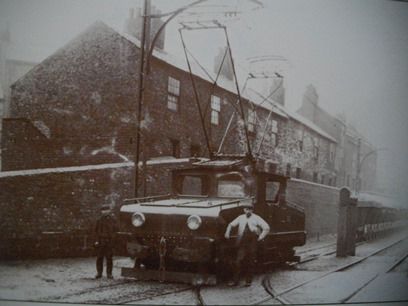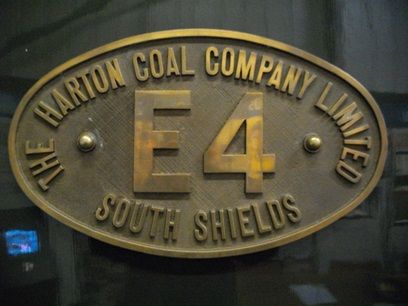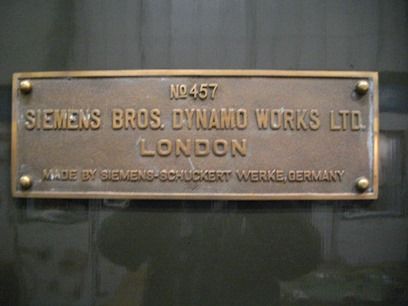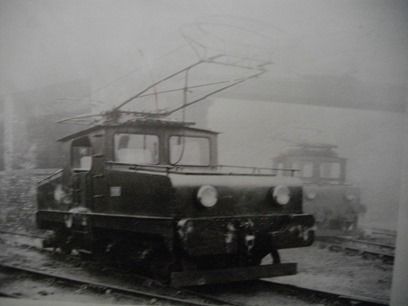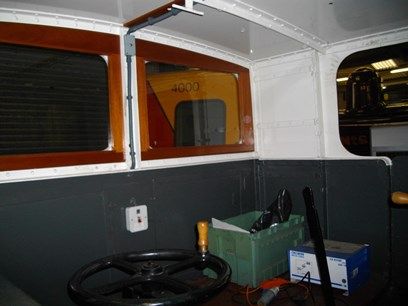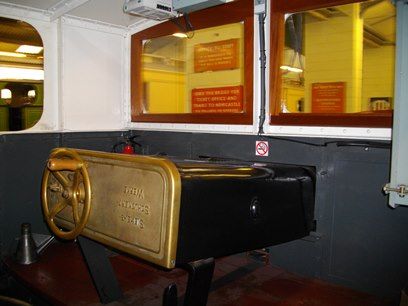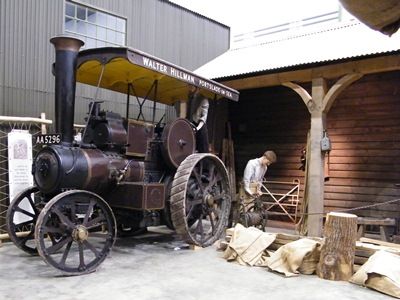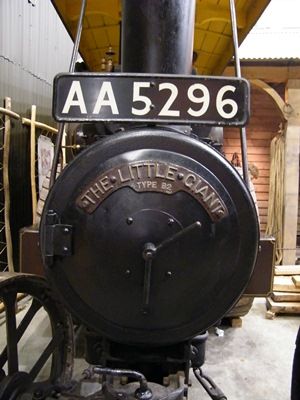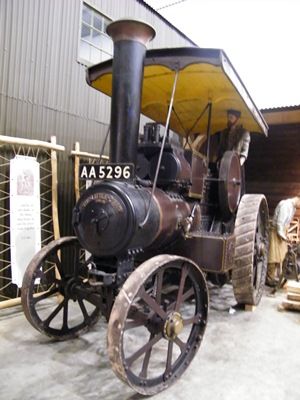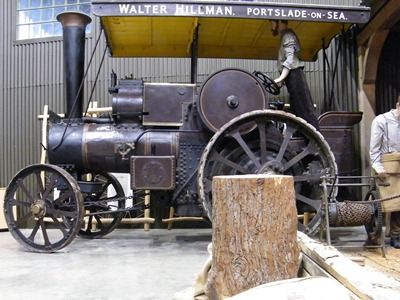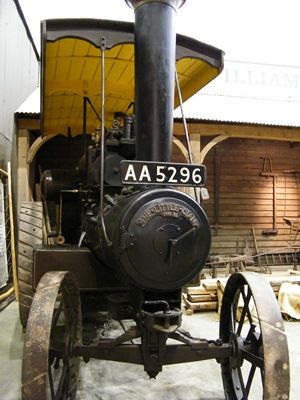A blog about the Edwardian era in the UK - objects, buildings, people, literature, film and all other aspects of the Edwardian era (covering 1901-1919)

Saturday 31 August 2013
Wednesday 28 August 2013
The Moya Visible No 2 Typewriter, 1905
The Moya No 2 typewriter was a very popular small typewriter, with the ribbon spools arranged at the side of the typewriter for greater visibility of what was being typed. It was also popular in foreign countries as the type sleeve could be easily changed from one language to another
Tuesday 27 August 2013
1913 Bakery to open!
Photo - http://www.beamish.org.uk/joseph-herron-baker-and-confectioner/
Exciting news from Beamish Open Air Museum - their latest building, the rebuilt Edwardian Joseph Herron, Baker & Confectioner shop, as part of the 1913 Edwardian Town, is due to open to the public on 12th September! As well as making the same produce that would have been made there a century ago, there will also be the opportunity to buy it too. For more information, and photos, please visit the following links;
http://www.beamish.org.uk/joseph-herron-baker-and-confectioner/
http://www.beamish.org.uk/traditional-bakery-soon-to-open/
Photos of the building under construction here;
http://electric-edwardians.blogspot.co.uk/2013/04/beamish-edwardian-bakery.html
Monday 26 August 2013
The Moya No 1 Typewriter, 1902
The Moya No 1 represents the beginning of the Leicester typewriting industry, which went on to create the Imperial model Typewriters featured last month. The Moya No 1 was invented in 1902 by Hidalgo Moya, a Spanish-American who previously worked for the Hammond Typewriter Organisation of the USA. Moya set up his work to design, produce and market his typewriters from a small factory in Garton Street, Leicester, wanting to make a good typewriter at a decent price, with the Moya No 1 being sold at £5, 5 shillings and 0 D. It sadly turned out to be uneconomic and was not much of a success, hwoever the No 2 was more succesful. One interesting feature of the design was the removeable type sleeve which meant different fonts and sizes could be interchanged with the standard type sleeve.
Friday 23 August 2013
28mm Pathe Freres KOK Cinematographe, 1911
This is a hand cranked silent film projector, one of the earliest types manufactured for amateur filmographers. It was patented in 1911 and projected the image on 28mm film using an electric lamp powered by its own built-in generator
Sunday 18 August 2013
London Fireman, 1908
A London Fireman, 1908 - he appears to be wearing a form of breathing apparatus. Copyright Getty Imagse
Wednesday 14 August 2013
Shell Motor Spirit Advert, c1910
This amusing poster, dating from circa 1910, uses the Suffragettes and their votes for Women campaign, but wanting to vote for something slightly different! Women motor drivers grew in number and helped liberate women more and give them more social freedom - and women motor drivers in the Great War, mainly in the role of ambulance drivers, were among the women workers who helped the war effort and ultimately won the right to vote shortly after the war ende
Sunday 11 August 2013
F W Woolworth's First British Store, 1909
Woolworths will be a familiar name to many readers - the first British Woolworths store opened in Liverpool in late 1909, an American chain originally. The high street stores featured in most if not all British towns and cities until it closed down just under 100 years later, the last stores closing in January 2009
Thursday 8 August 2013
South Eastern & Chatham Railway P Class Locomotive 178, 1910
One of eight P Class 0-6-0T Locomotives built, designed by Harry Wainwright and designed for work on light passenger services in 1909, 178 was built in 1910 at Ashford Works, Kent and first allocated to Ash Shed, a sub-shed of Reading in Berkshire (although firmly in Great Western Railway territory, the SECR had a line running around London to Reading) and was used for push-pull services between Ash and Reading, where the locomotive was sandwiched between two (or sometimes up to four carriages) and the train driven from either end of the carriages, avoiding the need for the locomotive to run around the train of carriages at each end of the line, making it very efficient and enabling a more intensive service - this was very popular in the Edwardian era
It seems they were actually too popular on these services, and the increased passenger loads meant more powerful locomotives had to be used than the diminutive P Class locomotives, and 178 was transferred to local services in south London working shuttle passenger services. After being moved around other sheds including Margate and Hastings, 178 was moved onto shunting services in 1916, shunting carriages at Redhill, and then to working in aeronautical stores by the Charing Cross to Bexleyheath line. After the grouping of the SECR and other railway companies to become the Southern Railway in 1923, 178 was moved onto work as a docks shunter, and spent most of the rest of its service life doing this, until the 1950's when 178 (now known as 31178 in British Railways service) it was sold to the Bowater's Paper Mill, and then to the Bluebell Railway, the first preserved standard gauge railway, in 1969. It was bought as a source of spare parts for the two other P Class locomotives (27 and 323) the Bluebell owned, and after being stored for many years had restoration started in 1992, and returned to service for the first time since 1969 in February 2010. It is now in service on the Bluebell Railway alongside sister locomotive 323 - in all, four of the eight P Class locomotives have survived into preservation. As can be seen, 178 was restored into the beautiful original South Eastern & Chatham Railway livery it would have worn when new, and looks fantastic alongside H Class 263 or C Class 592, both also in SECR livery
Monday 5 August 2013
Delaunay Belleville 40hp (6 cyl) Car (Lambert & Butler Motors 16 of 25)
"This is a fine example of the cars manufactured by the well-known Boiler Makers and Marine Engineers. The engine is the latest 6 cylinder 40hp model. The complete car was built to the special order of HH The Maharajah of Cooch Behar, and will be used for extensive tours in his dominions"
Saturday 3 August 2013
Siemens-Shuckert Electric Locomotive E4, 1909
E4 at Portberry Street, South Shields, 1910, photo believed to be from Tyne & Wear Museums
The fourth and final preserved Harton Coal Company Edwardian built electric locomotive to feature on this blog, this is E4, a BO-BO electric locomotive built by Siemens-Shuckert, sometimes just known as Siemens (previously, Siemens built locomotives on this blog have just been referred to as 'Siemens') in 1909, the same as E2, the four wheeled but otherwise very similar looking electric locomotive built by Siemens in the same year for the Harton Coal Company. The use of an electric industrial railway is very surprising, especially as industrial railways used steam locomotives up until I believe the very early 1980's in the UK, and certainly well into the 1970's, however the Harton Coal Company who operated several coal pits around South Shields was very keen to show itself as the most modern coal mine in the country if not the world, and the mines themselves were equipped with the latest Siemens built electric powered equipment.
E4 at South Shields, around 1909. Photo believed to be from Tyne & Wear Museums
E4 was one of nine Siemens built locomotives for the Harton railway, three of which survive today, and was in use for an astonishing 73 years, until 1982. The electric locomotives were used for hauling coal wagons up to the docks on the River Tyne. As can be seen from the cab roof pantograph of the surviving Harton electrics, they collected their current for the electric motors from overhead wires, E4 being equipped with four 35 kiloWatt motors. E4 is now on display at the Stephenson Railway Museum in North Shields, near Newcastle, across the river from where it originally worked. E4 has, surprisingly, been restored to working condition, which I believe makes it the only electric locomotive in UK Preservation that originally took its power from overhead wires that is still operational. The museum does not have overhead wires, but instead takes it power from batteries in a coal wagon which can be coupled up to the locomotive with a discrete pipe between the two to supply power to the locomotive. Unfortunately I haven't seen it in action but am very keen to, and opens up the possibility to restore to working order other preserved electric vehicles. The other surviving Harton electrics are all located in the north east, and have been featured on the blog here;
Thursday 1 August 2013
Taskers B2 'Little Giant' Steam Road Tractor, 1914
Built to the same design as 'Blossom' of 1917, featured on this blog last month, this is a Tasker and Sons of Andover B2 'Little Giant' steam road tractor, a small traction engine design built for road haulage. This one is works number 1599 of 1914, registered AA5296 and developing five nominal horsepower. This one is shown in a timber yard scene, where it could be used to power the saws used to cut the wood and also haul it to customers or a railway yard for onward transportation on trailers. Like 'Blossom', it is on display at the Milestones Museum, Basingstoke
Subscribe to:
Posts (Atom)
